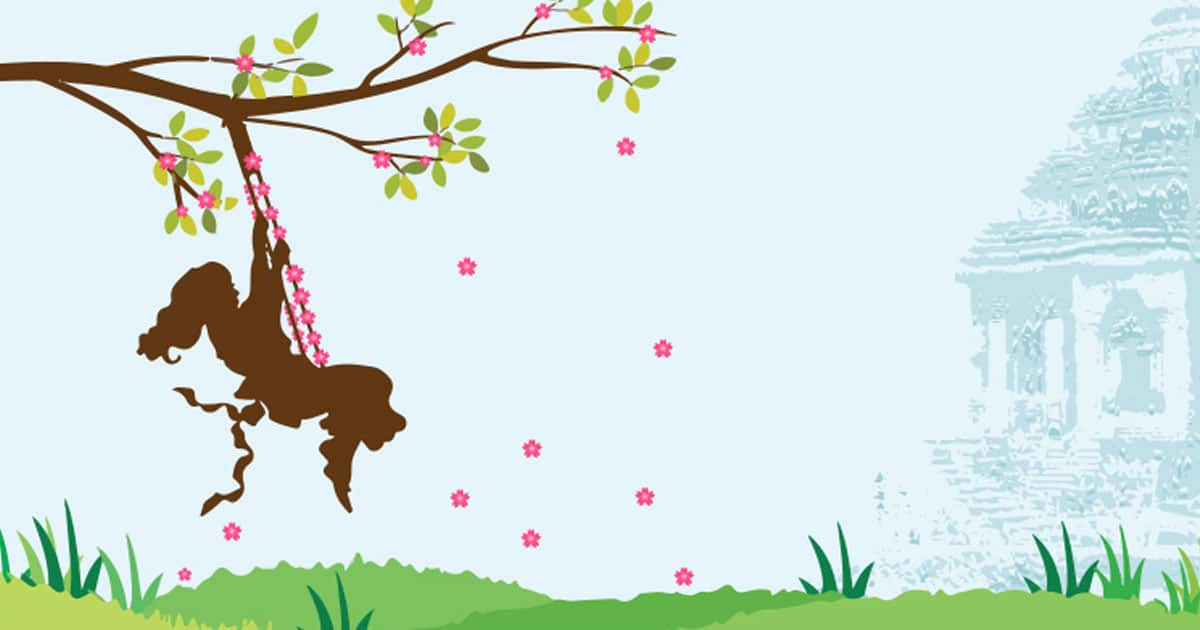While a good percentage of the world population still shies away from talking about menstruation, an Indian state celebrates the phenomenon through a holy festival.
We are talking of Odisha, the Land of Jagannath, the incarnation of Lord Vishnu. The people of this state celebrate Rajo, Raja, or Raja Parba for three days to revere womanhood. And by that, we mean female menstruation.
The term Raja came from the Sanskrit word ‘Rajas‘, meaning menstruation, and when a woman menstruates, she is called ‘Rajaswala‘ or a menstruating woman. In medieval times, the festival became more popular as an agricultural holiday for the worship of the Earth, Lord Jagannath’s wife. As a mark of respect towards the Earth, all agricultural works come to a standstill during these days.

A silver idol of Bhudevi is still present in the Puri Temple beside Lord Jagannath.
According to popular belief, as women menstruate, which is a sign of fertility, Mother Earth also menstruates. So the three days of the festival are considered to be the menstruating period of Mother Earth subtly signifying a woman.
It is one of the most popular festivals of the state dedicated to Bhuma Devi (Earth Goddess), the consort of Lord Vishnu. It is believed that the deity undergoes menstruation during the first three days of the festival. This is followed by the fourth day, which is called Vasumati Snana, or the ceremonial bath of Bhudevi.
Also, read: 9 Lesser Known Incarnation Of The Goddess And Their Holy Abodes In India
The festivities begin a day before Mithun Sankranti and conclude two days after that. It also marks the beginning of the monsoon.
The first day of the festival is called Pahili Raja, the second is Mithun Sankranti, and the third is called Bhu Daha or Basi Raja. The preparation begins one day before Pahili Raja, and is called Sajabaja. Primarily, it is a time for unmarried girls to prepare for their marriage. They follow various customs such as consuming nutritious food like Podapitha, not walking barefoot, taking a bath on the first day, and merrily swinging on ropes attached to a tree.
Women in the state are expected to follow the ‘rules of menstruation’ during these three days. They wake up at dawn and take a bath on the first day, after which bathing is not permitted till the end of the festival. In some parts, women also follow customs like eating uncooked food. They also wear new clothes, play games, and are kept away from all household chores.
The special aesthetic attraction of the festival is the makeshift, decorated swings that are installed in trees. There are also songs specially meant for the celebration that speaks of love, affection, respect, social behavior, and everything of social order that comes to the minds of the singers. Through anonymous and composed extempore, much of these songs, through the sheer beauty of diction and sentiment, have earned permanence and gone to make the very substratum of Odisha’s folk-poetry.
The most famous one is “Banaste Dakila Gaja, Barase Ke Thare Asichi Raja, Asichi Raja Lo Nei Nua Sajbaja” meaning the elephant calls out in the jungle, Raja has commenced bringing new joy, and adornments.
Beautiful, isn’t it? Wouldn’t it be wonderful if the rest of India joins in to celebrate it?

